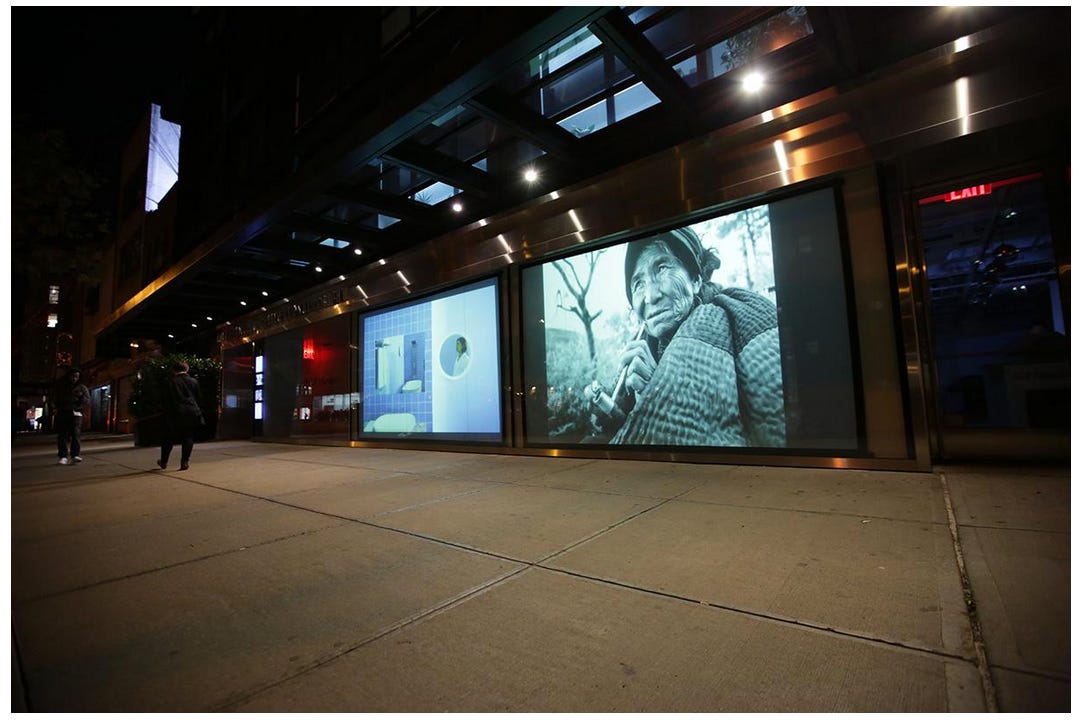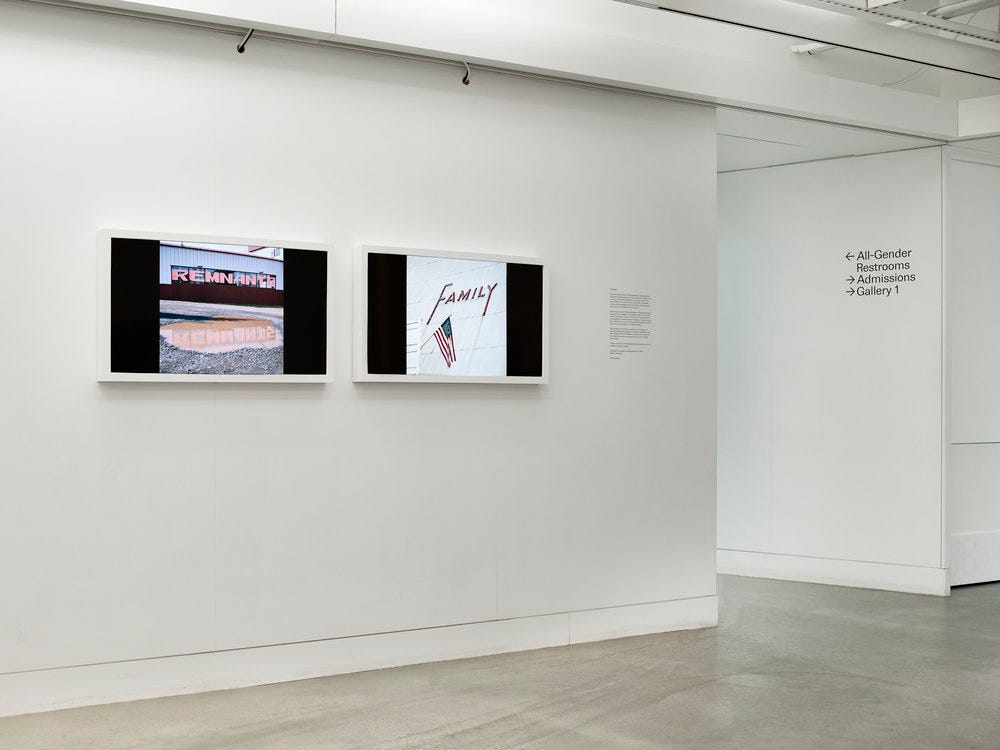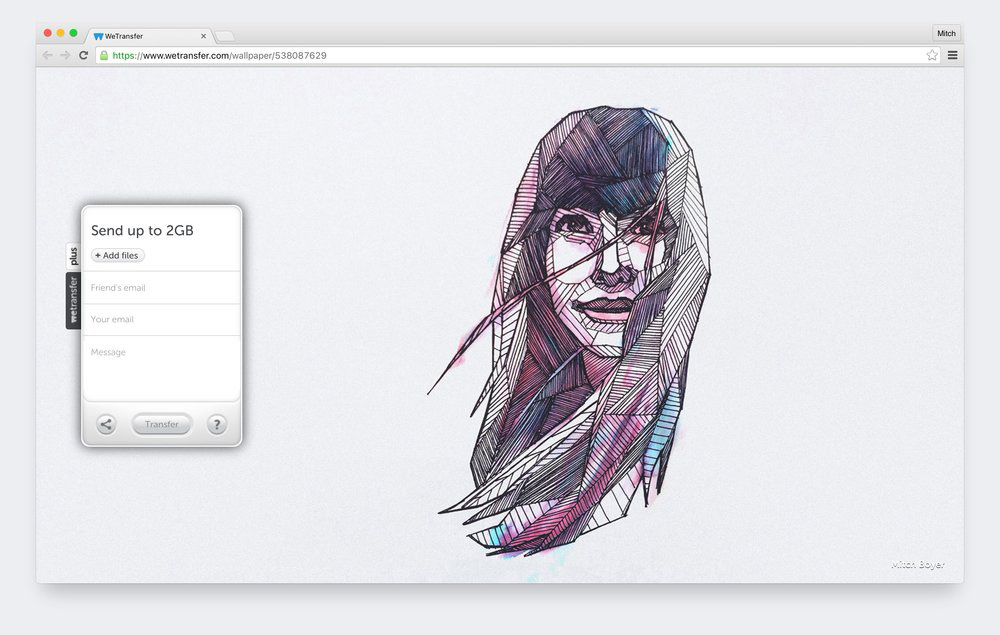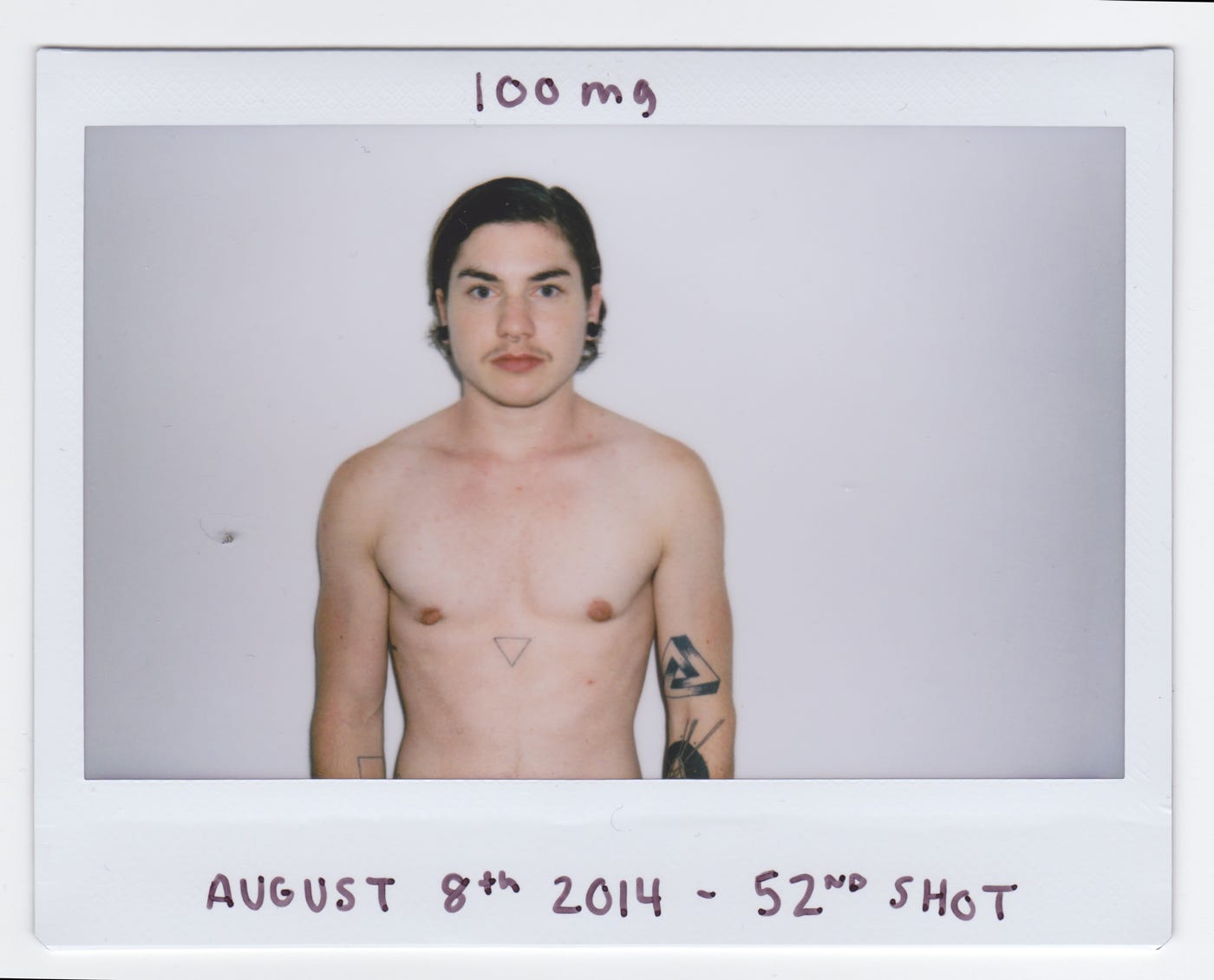Process 084 ☼ What Does A Photo Curator Do?
My work for the top photo museum in NYC and more.
Dear friends,
This week’s letter is about my work as a photography curator for companies like WeTransfer and institutions like the International Center of Photography.
What does a curator do exactly and how does a curator look at your photography? Keep reading!
What Does a Photo Curator Do?
Curator is one of those job titles that exists in many variations. There are curators at highly respected museums and there are curators who maintain an online gallery. Some have a PhD and are educated in the field of art history, while others are self-taught and learn on the job.
Generally speaking curators have four main responsibilities: to find, develop, care for, and present work to an audience. What that looks like in practice can vary greatly and below are two examples from my own curatorial work.
My Work for WeTransfer
When WeTransfer was just a baby WeTransferito I was brought in as their first outside curator for visual culture. For roughly three years I was responsible for finding new talent in the areas of photography, illustration, and graphic design. I would help each creative to select images from their portfolio that best represented their work and helped them reach their goals.
For the period of one week WeTransfer would serve their artwork inside of their full-page ad rotation and link to the artist website sending thousands of visitors their way. When I featured Mitch Boyer’s illustration work it looked like this:
Over the course of my three years with WeTransfer I curated work by nearly 600 photographers, illustrators, and graphic designers, including Wendy MacNaughton, Tuesday Bassen, and Noah Kalina. Their work generated over 40M page views.
I absolutely loved my role. It allowed me to support and shine a light on artists in the earlier phase of their career and hopefully help them take the next step. In many ways it was similar to my work in the music business managing artists and producing album. But that’s a story for another time.
Around the time of my last year with WeTransfer I started publishing my first big photography project One of Many (see Process 082). All the related travel and portrait-taking led to a massively expanded network of talented US-based creatives at an early stage of their career. The work for WeTransfer did the same but globally.
My Work for ICP
Fast forward a year and some other projects showcasing my ability to find new creative talents around the world. I was invited to meet the executive director of the International Center of Photography (ICP) for a coffee to brainstorm about ways to bring in a younger community of photographers and visitors for the museum.
ICP is the world’s leading institution dedicated to photography and visual culture. Their co-founder Cornell Capa coined the phrase ‘concerned photographer” to describe “those photographers who demonstrated in their work a humanitarian impulse to use pictures to educate and change the world, not just to record it.”
ICP’s reputation is sterling, but like any institution that represents the vanguard of photography history it can be challenging to continue to shine a light on the future.
The meeting left me incredibly inspired and full of ideas. Over the course of the following week I created a concept called ICP Projected. The word projected itself had two layers. Firstly, it refers to photographers who represent the future. Secondly, it hints at the actual method of showcasing their work. Rather than the traditional framed print on the wall ICP would literally project the images into the streets of New York City through its windows. Like this:

The ICP leadership loved the concept and I came on board as the founding curator of ICP Projected. We decided to present a new photographer each week, which is a blistering pace in the museum world. Since I was used to working for tech companies I knew it was doable.
My responsibilities were more broad than in my role at WeTransfer. Here’s the list I made back then:
Create and safeguard the concept of ICP Projected.
Find a diverse group of photographers around the world making work that suits ICP’s mission of presenting concerned photography. These photographers should qualify as new voices, meaning we generally stay away from established names.
Outreach and communication with photographers, partners, and internal stakeholders at ICP.
Work with the photographers to select the best project to highlight and curate the right set of images in the right sequence to best tell their story.
Set up partnerships with like-minded organizations like Magnum, the UN, Kodak, and others to increase reach.
Manage all assets, images and text and create a custom slideshow for each project.
Interview photographers about their work for the ICP website.
Collaborate with the press department to get attention for the exhibits.
Collaborate with the marketing department to set up website and marketing.
Collaborate with the facilities staff to find the right window covers and foil materials to create a high-end projection to showcase the work.
Collaborate with ICP’s head curator who signed off on each photographer.
Projected was one of my favorite projects I’ve ever worked on. Over the course of a little more than two years we presented nearly 100 exhibits. We showcased work by 300+ photographers from over 50 countries, including some of today’s most compelling voices like Tyler Mitchell, Andre W. Wagner, and Nadine Ijewere. For many it was their first major showing in the United States. (For a full list of all Projected exhibits go here.)
Projected engaged an audience nearing 100 million photography lovers and did indeed feature collaborations with high profile organizations like Magnum and the United Nations. I learned so much from working with all these amazing folks.

When ICP closed for a year to prepare for a big move into their new location we had to pause the project, which was understandable. And then came the pandemic which changed everything for everyone. We never got to continue Projected which means we left it off only two exhibits short of reaching the 100th, which my brain haaaates.
I hope that there can be a restart or reinvention of Projected in 2023 either at ICP or elsewhere. Frankly this look back has me feeling really fired about the idea of doing more curatorial work again so I will start plotting and share my progress here.
What I Look For As A Curator
Every curator works differently and comes from a different background so what follows here is specific to my methodology and not necessarily anyone else’s.
1. A Point of View
First and foremost I look for a point of view, an opinion, and a photographer who manages to convey that point of view. Are they trying to say anything specific about something? If not, then the work might be beautiful at best and I tend to pass in the context of curation for a museum or publication.
A good example is Noah Kalina’s Everyday project for which he’s taken a self-portrait every day since January 10th, 2000. It started when he was a fresh-faced 19 year old and we showcased the first 17.5 years as part of Projected. Noah shared his point of view behind the project in an interview we did for the ICP website.
The project speaks to the passage of time and how it affects people and places. It unfolds with each passing day, in a way that is nearly imperceptible in our own lives but when we watch a video like the one below it’s inescapable.
This project has a strong point of view with a sense of humor and melancholy.
2. Does It Fit?
In the context of curating for ICP the work their mission of showcasing concerned photography. For Projected specifically I choose to focus squarely on new voices. This is an easy framework to work within.
A great example of a very personal project that uses images to educate and change the world is Wynne Neilly’s series Female to “Male”, in which he documents his gender transition in a series of self-portraits and personal objects like letters and receipts.
In Wynn’s own words from our interview: “I can really only hope that this project’s contribution to the larger discussion on identity and gender is that it is just one small piece of a much larger picture. This project represents my identity and gender and it can’t speak for anyone else’s. I want people to be educated by it, to relate to it, and to walk away feeling like they can be a better ally or support system.”
3. Is There A Future?
A more intangible aspect of what I look for is whether or not I get the sense that the photographer takes their craft seriously and is committed for the long run. Being able to shine a spotlight as large as the ICP’s comes with responsibility. There’s only so many photographers I can push forward into the world and I don’t want to waste that opportunity on someone who is not committed to the craft. This aspect is specifically important to me since I generally focus on curating early-career photographers.
Whenever I come across a photographer I am considering I will make sure to read what they’ve written or said in interviews. This going beyond the classic art school “artist statement” which generally speaking isn’t very personal or real. I will also set up a studio visit or zoom/phone call to get to know them a bit before deciding.
There are other factors but these are three of the main things I personally look for as a curator when considering whether a photographer and project are a good match.
What I Curate Currently
Since I went on a break from curating exhibits I have focused mostly on helping photographers curate their work during the process of making of a photo book.
It can be incredibly difficult, if not impossible, to create a great selection from a larger body of work if it’s your own. I love guiding this process and helping make the hard decisions a bit easier through an outside perspective on which images contribute to the story and which don’t.
A similar process happens during my mentor sessions when I help photographers figure out their portfolio, their personal visual voice, or early stage projects. I’m mostly booked up for the next month or two but feel free to email me if you’re interested in being on the wait list for the next set of sessions.
That being said, writing this letter has fired me up to start exploring curating exhibits again this year. More on that in the future!
Takeaways
Ask yourself: What is my point of view and what am I trying to communicate with this image/series/portfolio? I recommend writing this out by hand in a note book and taking your time. Sometimes it takes a few tries, and the answer always changes with time.
Ask yourself: Is this publication/gallery/website a fit for the work I make? Focus on the ones that get a yes answer.
That’s it for this week!
Next week: I’m taking you on a trip to the most famous historic fish market in Tokyo where I had to sneak in at 5.30 in the morning and manage to stay undetected for two hours while taking photos for a travel story for Eater. It was amazing.
Keep shooting and take good care of yourselves and others.
Wesley
PS You already know this but all my film work is developed and scanned by my friends at Carmencita Film Lab. Use code “PROCESS” at check out to get a free size upgrade.
Process Giveaway!
The randomly drawn winner of the Process x Moment Giveaway is long-time reader
who lives in New York City where she is a licensed tour guide and street photographer, with her very own newsletter called Shoot New York CityLeanne has won a $150 giftcard so to buy anything from film, to bags, an online course, and many other valuable photo tools from the Moment store.
Here is her answer to our question:
When did you first start taking pictures and what motivated you to start?
“I began my journey in photography when I was 12 and my father gave me a camera. Neither of us knew how much photography would mean to me. It became an important method of communication for me. Fifty plus years later and I am always learning more about life through photography.” - Leanne
Read more than 75 other amazing origin stories shared by readers here.
Major shout out to my friends at Moment for sponsoring this giveaway. Check out their webshop for all your photo needs. The next Giveaway is coming very soon.
Did you enjoy this issue? Share it with a friend who might love it too.
Can’t get enough? Browse the Process Archives.
Find me on Glass / LinkedIn / Instagram / Twitter / Pocket / YouTube



A wonderful and informative read, thank you. Noah Kalina’s "Everyday" is gorgeously melancholy. I found the changing backgrounds to be just as mesmerizing as his gaze.
Those takeaway points... simple, but more than enough to help crystallise one’s intention